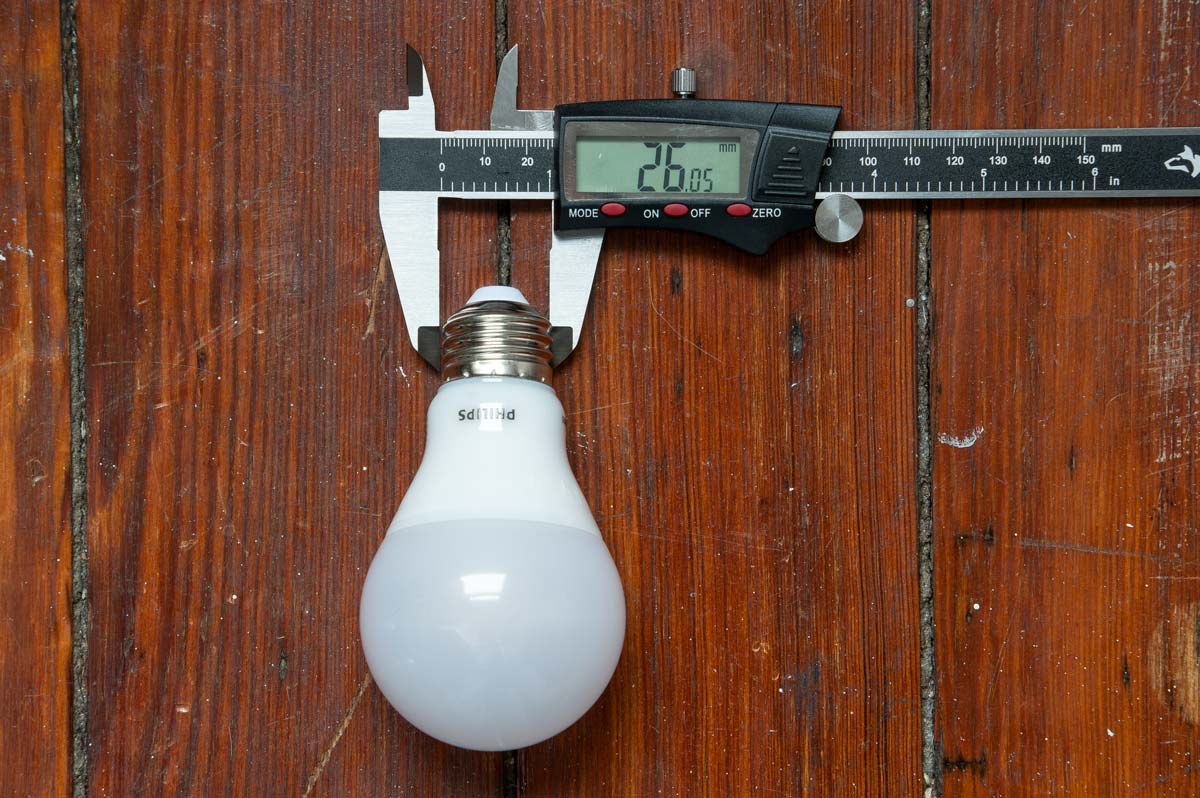As we talked about in a recent article, replacing your old incandescent bulbs with LEDs is one of the biggest no-brainers in energy savings. Even if you’re somebody who doesn’t have the time or motivation to crawl through your attic with a can of spray foam, there’s just no excuse not to spend an hour or two swapping out your old, inefficient lightbulbs.
A big part of what makes that decision so easy is the fact that LEDs have come down significantly in price since their introduction, and are available in many more sizes and styles than they were originally. However, this new abundance has a potential downside: unlike old-fashioned incandescent bulbs, where you basically just chose a wattage (as a stand-in for brightness), now you’re faced with more choices than you may know what to do with.
This article will walk you through some of the terminology you’ll find on the packaging of LED lightbulbs. But first, for anyone looking for the quick takeaway:
If you’re looking for a bulb that more or less mimics the appearance of an incandescent, you’ll probably be happy with a 60w- or 100w-equivalent 2700K LED (affiliate link).
There are a lot of variables to consider, but let’s start by making sure that the LED bulb you’re purchasing is going to fit into the socket of your existing light fixture.
LED Bulb Base Sizes
If you’re looking to replace a “standard” incandescent or compact fluorescent (CFL) bulb in the United States, you’re almost certainly going to need to buy a bulb with an E26 base. The “E” in this instance stands for Edison, as in the inventor of the lightbulb (and this type of screw-in base), and the “26” represents the diameter of the base in millimeters. That’s what’s shown in the photograph at the top of the article. (If you’re in Europe, as I understand it, you’re more likely to be using an E27 base.)
The E26 base is so common that the packaging of many bulbs you’ll see for sale in stores doesn’t even clearly indicate the base size. Instead, it will simply indicate the size of the bulb (see next section), and the base size is sort of implied. However, if you’re shopping for bulbs online, especially through specialty bulb retailers, it’s easy to get overwhelmed by the many other base sizes and types offered, all of which are much less common than the E26.
The only other screw-in base type I’ve come across “naturally” in my daily life (i.e., not when doing research for a special project or application) is the narrower “candelabra” base, also known as the E12. I used to live in an apartment where the ceiling fans all had three small lightbulbs, each with that E12 base.
If for some reason you don’t think your existing bulb has a standard base size, you can get an accurate diameter using a digital caliper like the one in the photos above and below. (If you don’t own one, I think you’ll find enough other uses for it around the house that it’s worth the small investment.) That way you can navigate the bewildering array of bases available online. Of course, you can always just take your bulb to the hardware store and compare in person.
Along with base size, there are two other critical qualities of LED bulbs, discussed at the bottom of the article, that you’ll need to match to your existing bulb or location—dry/wet/damp rating, and whether the bulb is rated for “fully enclosed” fixtures or not. The following discussions of bulb size and light output/quality are sort of “up-to-you” features, but we’re going to talk about them first because they’re more prominent in terms of LED packaging, online descriptions, etc.
LED Bulb Sizes
The technical name for the most common traditional incandescent bulb shape and size in the United States—you know, the light bulb you’re picturing in your head—is the A19 bulb. You may not have noticed it, but this label is probably on the packaging of most of the bulbs you’ve bought in your lifetime. The “19” represents the maximum width of the bulb in 1/8” increments: in this case, 19 eighths of an inch, or 2-3/8“. The “A” apparently stands for “arbitrary,” a reference to the non-geometric shape of the bulb that I assume originated as a way to house the filaments.
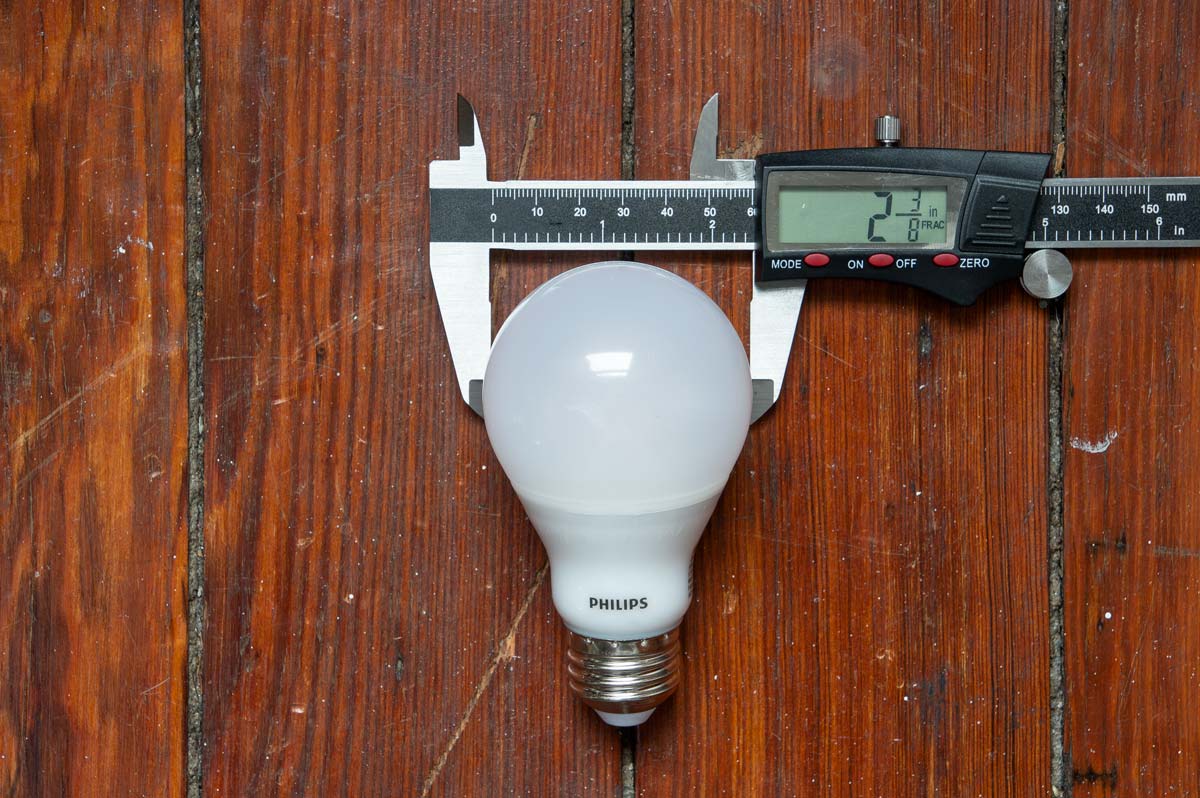
Modern LED bulbs obviously don’t have a technical reason to maintain that shape (see the photograph of an LED bulb’s innards at the top of this previous post), but we’ve grown so attached to it as a culture that I’d be surprised if it ever disappears. On the other hand, it certainly seems as though there is a wider variety of bulb shapes and sizes than ever before. This could be an illusion created by the internet (i.e., a wide variety of incandescent bulbs may have been previously available to contractors through specialty suppliers and most of us just didn’t know about them), but I suspect that the tiny footprint and high output of the diodes doing the light-emitting has resulted in greater freedom in bulb design.
Put another way, the shape of each plastic bulb enclosure can probably be pretty much whatever the manufacturer wants at this point. And that can be a benefit to you, not only when you’re looking to replace an odd bulb size, but if you have an application where you just don’t like the look of a traditional A19.
While you’ll probably want to try to match your existing bulb size in most circumstances, unlike with base size there’s no reason you have to. There may be situations where you want to get a little bit creative and take advantage of the fact that the qualities of LEDs aren’t really closely tied to bulb size and shape.
For example, take a look at the photo below, which shows a fixture in the style of an old gasolier (it might be an actual retrofitted gas fixture, but I don’t think so). Although the sockets are all E26, traditional A19 bulbs stick up above the glass shades. This fixture would clearly look better with shorter bulbs. You could try an A15 bulb, which is about an inch shorter, or a specialty miniature LED that’s a full two inches shorter (albeit with reduced light output; see discussion of lumens below). In general, non-A19 bulbs are going to be more expensive, but you can decide if this is worth it to you based on what you’re trying to achieve.
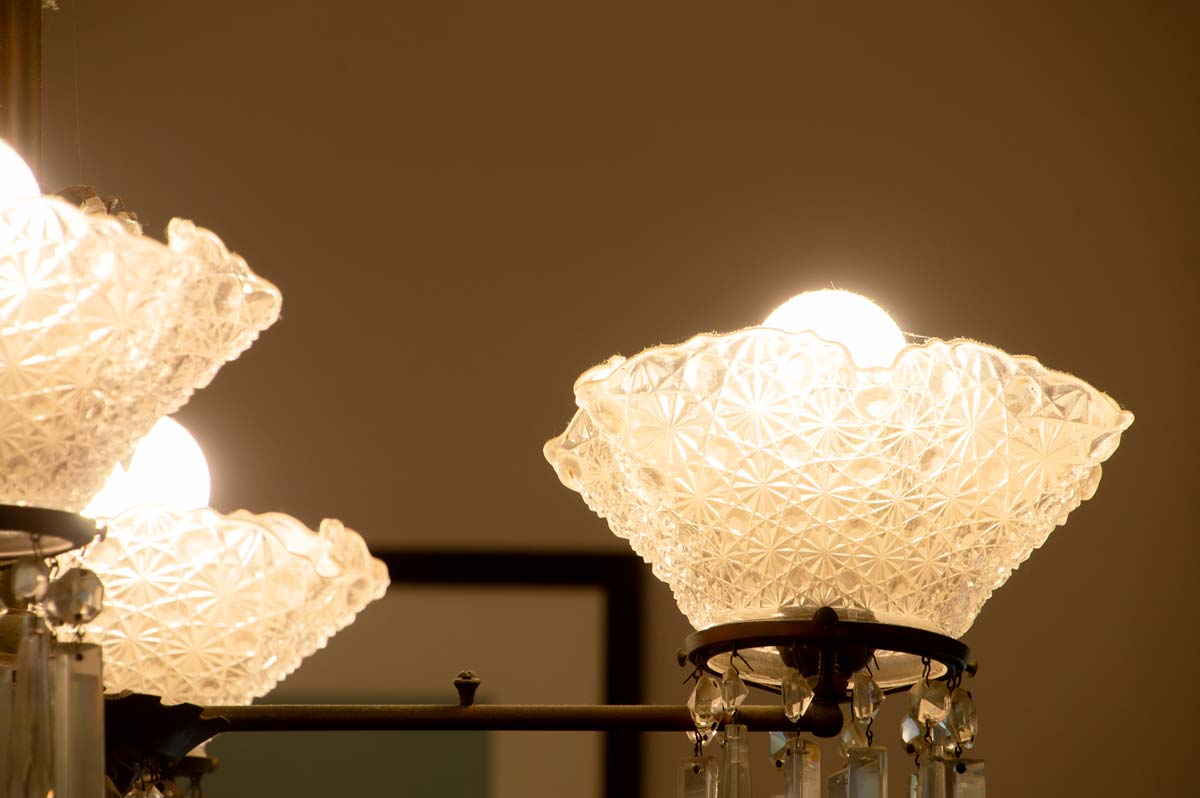
LED Bulb Color Temperatures
I was torn about whether to talk about color temperature or brightness (lumens) next, but I find that color temperature is the first thing I notice about any bulb. Even if you don’t know what that term means, you’re going to immediately know if you got it “wrong” for your application. Ever notice that a particular room makes your skin look a sickly green color, or that a lamp in your house gives off too harsh a light? Different bulbs emit parts of the light spectrum in different proportions, which we perceive as warmer (more yellow/red) or cooler (more blue/white). That’s what’s referred to as “color temperature.”
Color temperature obviously has an impact on how everything illuminated by a bulb appears, which is why it’s so important. Traditional incandescent bulbs didn’t really vary in color temperature—they were all fairly “warm,” thanks to the reddish glow of their tungsten filaments—but temperature varied across different types of light technology. For example, fluorescent tubes almost always had a cooler, whiter “daylight” appearance. Old metal halide lamps like those that might have lit your high-school gym had an off-putting greenish cast.
Nowadays, though, the diodes that make up LED bulbs can tweaked to create different color temperatures among otherwise identical bulbs. The internet tells me that this is done by coating blue LEDs with a substance called a phosphor, and I’m not going to pretend to understand it. But in practice, what this means for you is that you’ll have the option of purchasing most LED bulbs of any shape or size in a range of color temperatures from 2700K (warm) to 5000K (cool; sometimes called “daylight”). (The K stands for Kelvin, as in the temperature unit, and you can read more about color temperatures and how they’re defined here if you’re so inclined. The link is to an excellent photography website, but the concept of color temperature is the same.)
Traditional incandescents were almost universally about 2700K, so you should purchase an LED with that temperature if your goal is to replicate the look of a traditional bulb. All of the bulbs shown in the photos in this article are 2700K. These bulbs are often marketed as “soft white,” but it’s safer to check for the actual temperature value. If you prefer a slightly whiter light, a 3000K “bright white” bulb might be more attractive to you.
I personally tend to think that 5000K “daylight” bulbs look out of place inside peoples’ homes; after all, that’s the color temperature of old fluorescent tubes, which we all associate with commercial buildings and offices. There’s a case to be made for these bulbs in bathrooms, say above your mirror, and in other situations where critical lighting is necessary (see color rendering index, or CRI, below). And maybe they don’t look as out of place in modern homes. But because you’re here reading Green Old Home, I think you’re unlikely to want a 5000K bulb in many places around the house.
LED Bulb Brightness (Lumens)
As discussed in the first article on LED bulbs, we used to talk about bulb brightness primarily in terms of watts. We could still technically do that now, but somehow the difference between 8.5w and 15w just doesn’t convey the same information for LEDs that 60w and 100w used to do for incandescents.
Instead, LED bulbs are described today—more accurately—in terms of “lumens.” You probably already know that Merriam-Webster defines a lumen as “a unit of luminous flux equal to the light emitted in a unit solid angle by a uniform point source of one candle intensity.” Kidding. But you can think of lumens essentially as a measure of brightness, with bigger numbers meaning more light.
A traditional 60w incandescent typically produced about 800 lumens, while a 100w produced about 1600 lumens. When you buy a “60w equivalent” LED today, it’s the fact that the bulb produces roughly 800 lumens that makes it “equivalent.” Ditto “100w equivalent” bulbs, which produce roughly 1600 lumens.
So do you need to look at lumens at all? Well, maybe not if your goal is to replace standard lightbulbs with their wattage “equivalents.” But for one thing, there’s no guarantee that those “equivalent” labels will be around forever—fewer and fewer people are going to remember what those old wattages refer to in terms of practical brightness. And it’s also useful to look at lumens when you’re evaluating specialty LEDs, or comparing other types of lights altogether, such as CFLs or halogens. It’s probably best to think of lumens as a constant way of comparing light output across different bulb technologies, each of which uses a different number of watts to do its job.
Color Rendering Index (CRI)
Color Rendering Index, or CRI, is a value that essentially indicates how accurately a bulb will illuminate the entire spectrum of visible light. A high-CRI bulb will help you to see subtler differences in paint colors, for example, than are visible with a standard-quality lightbulb. A theoretically perfect CRI value is 100. People doing color-critical work such as illuminating a light booth for product design tend to look for bulbs with a CRI of 95 or higher.
CRI probably isn’t a consideration when buying bulbs for your home, except perhaps in a workshop or bathroom vanity if you really care about color accuracy in those applications. High-CRI bulbs are generally of the bright white/daylight variety, because “warmer” bulbs—as the name implies—impart a reddish color cast on objects.
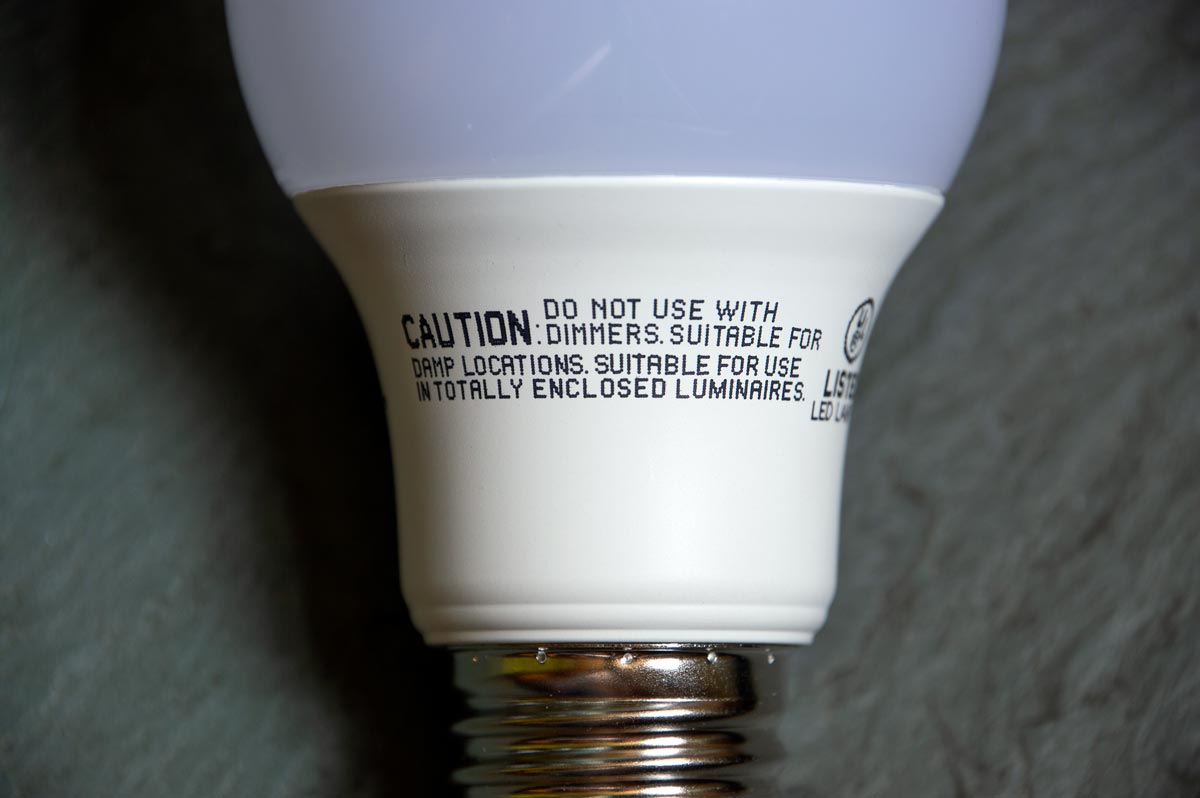
Dimmable/Non-Dimmable LED Bulbs
This characteristic is probably pretty self-explanatory: dimmable LED bulbs can be used with dimmer switches, while non-dimmable bulbs can’t.
I will only add by way of editorial that I’ve had some bad experiences with dimmable LEDs. In particular, I’ve had problems with them flickering—problems that go away when I replace the bulb with a CFL or non-dimmable LED. Dimmer switches are marketed today as being compatible with LEDs, which suggests that perhaps some older dimmers are not. I don’t know if that’s technically true, and in any case my dimmer switches were of the new variety anyway.
That’s pure anecdote, but a quick search of dimmable LED reviews suggests that I’m not alone with this experience. I haven’t done enough research to notice whether this issue varies by brand, but it might be something you want to look for in reviews prior to purchasing.
This flickering issue may be related to an interesting fact about how dimmable LEDs work: light-emitting diodes can’t actually be dimmed. They’re either on, or they’re off. Dimmable LEDs create the perception of different brightnesses by turning the diodes on and off in extremely rapid succession.
When your light is dimmed most of the way, it is cycled off more than it’s cycled on; when your light is turned up most of the way, it’s cycled on more than it’s cycled off. But it all happens so quickly that the effect is a little like looking at a ceiling fan that is spinning so fast that you can’t see the individual blades anymore. Your microwave also works like this; reduced power settings are actual 100% power cycling on and off at different rates.
In any case, I should end by saying that I’ve also had dimmable LED bulbs that work just fine. Dimmable bulbs are, however, slightly more expensive than non-dimmable bulbs, so just be aware of what you’re buying.
LED Bulbs in Dry vs. Wet vs. Damp Locations
Light bulbs have been rated for “dry,” “wet,” and “damp” locations long before LEDs came onto the scene. You can roughly think of “dry” and “wet” locations as indoor and outdoor, respectively, with “damp” locations falling in between—say, your front porch. Here are the full definitions from the National Electrical Code (NFPA 70):
- Dry Location: A location not normally subject to dampness or wetness. A location classified as dry may be temporarily subject to dampness or wetness, as in the case of a building under construction.
- Wet Location: Installations underground or in concrete slabs or masonry in direct contact with the earth; in locations subject to saturation with water or other liquids, such as vehicle washing areas; and in unprotected locations exposed to weather.
- Damp Location: Locations protected from weather and not subject to saturation with water or other liquids but subject to moderate degrees of moisture.
The NEC gives examples of damp locations, including “partially protected locations under canopies, marquees, roofed open porches, and like locations, and interior locations subject to moderate degrees of moisture, such as some basements, some barns, and some cold-storage warehouses.”
Unless you’re illuminating your house with floodlights, most of your lightbulb needs are probably going to be of the “dry” or “damp” variety. Does your basement require damp-location bulbs? If you’re unsure, purchase a bulb rated for damp locations—better safe than sorry. Buying an LED bulb that can’t handle a damp location may shorten its life, which kind of defeats the whole point of upgrading to a more efficient bulb in the first place! However, I should add that I struggled to find an LED bulb that wasn’t rated for damp locations. I suspect the plastic enclosures of standard LED bulbs just have a little bit of condensation protection baked into the design, but definitely double-check the label before purchasing.
LED Bulbs in “Fully Enclosed” Locations
If you look closely at an LED bulb, you might notice that it is labeled “suitable” or “not suitable for fully enclosed” fixtures or “luminaires.” It took me several years to notice this, and I wish I’d paid attention sooner—it could have saved me a few bucks in replacement bulbs.
Not only do LED bulbs run at much cooler than traditional incandescents, high temperatures can actually significantly shorten the lifespan of an LED. I’m not an expert in electronics, but I guess it has something to do with the internal circuitry. So when some LED bulbs are placed inside “fully enclosed” light fixtures such as the one in the picture on the right below, their own heat output can build up inside the fixture. My understanding is that the temperatures are way too low to be a fire risk, but just high enough to damage the electronics. However, those same LED bulbs are perfectly suitable for non-enclosed fixtures such as in the image on the left.
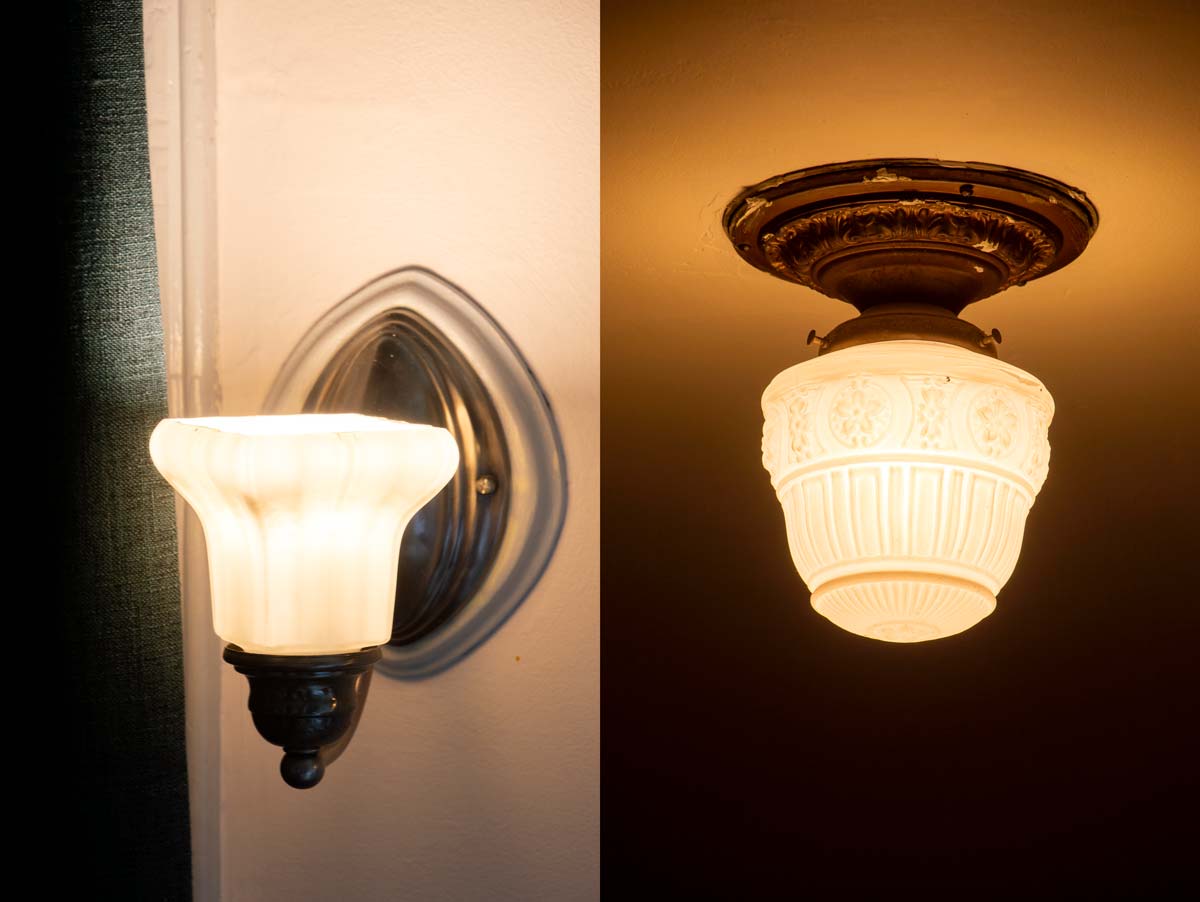
If you’ve got a historic light fixture or just any other fully enclosed lamp that you’d like to retrofit with an LED, the solution is to purchase a bulb that is rated “suitable for fully enclosed locations.” Again, I’m not sure of the exact mechanism, but these bulbs apparently have fortified electronics or some other safeguards that protect the internal components from the effects of heat buildup within the globe of the fixture. Just like we talked about with dry vs. damp locations, make sure you’re not sabotaging your efficiency upgrade by purchasing bulbs that aren’t right for your fully enclosed fixture!
Choosing an LED Bulb in Summary
I bet you didn’t think there were 3000 words to write about LED bulbs! To reiterate, though, when you’re looking to replace a bulb you can focus on just three critical factors:
- Base size
- Dry/wet/damp rating
- Suitability for fully-enclosed fixtures
Once you’ve covered those basics, you can make sure you’re getting exactly the bulb and light quality you want by looking at size/shape, light output (lumens), color temperature, and CRI.
That just about covers it for standalone LED lightbulbs. Next time, we’ll introduce the option of replacing your bulb-based lights with a new option that’s entered the field in the last decade or so: “integrated” LED fixtures, which have no “bulb” at all. Until then!
